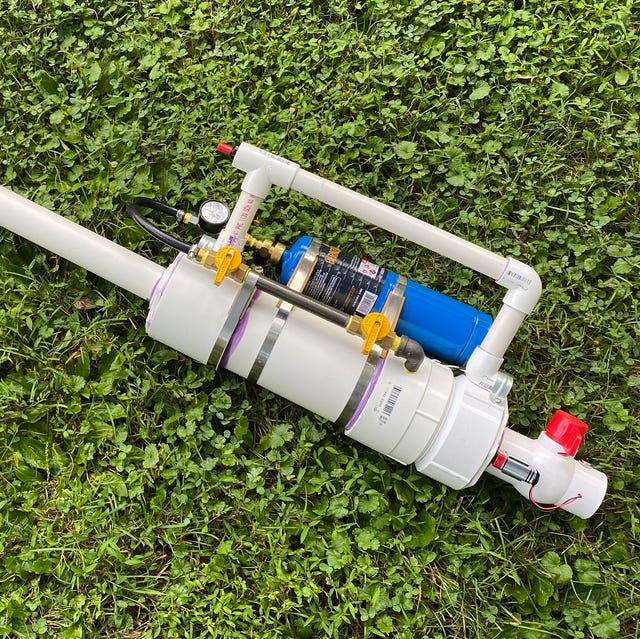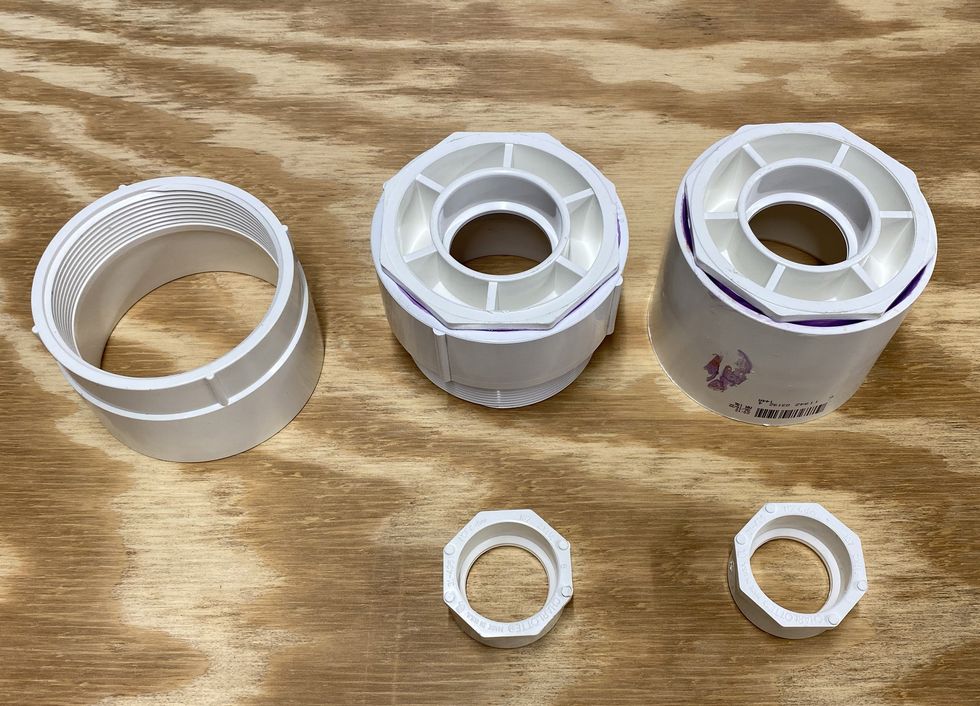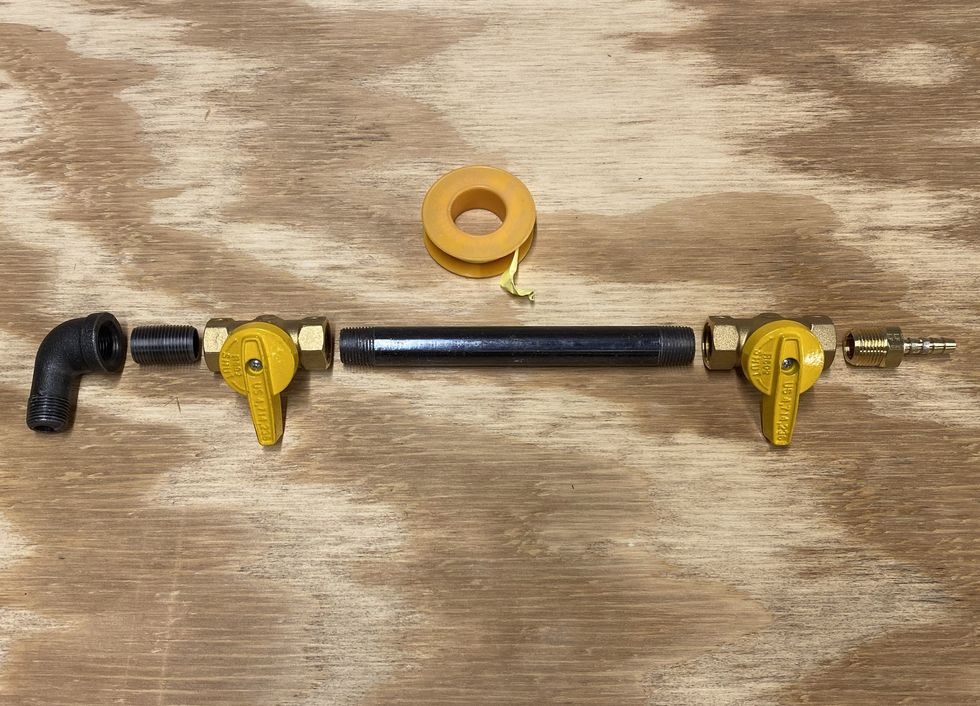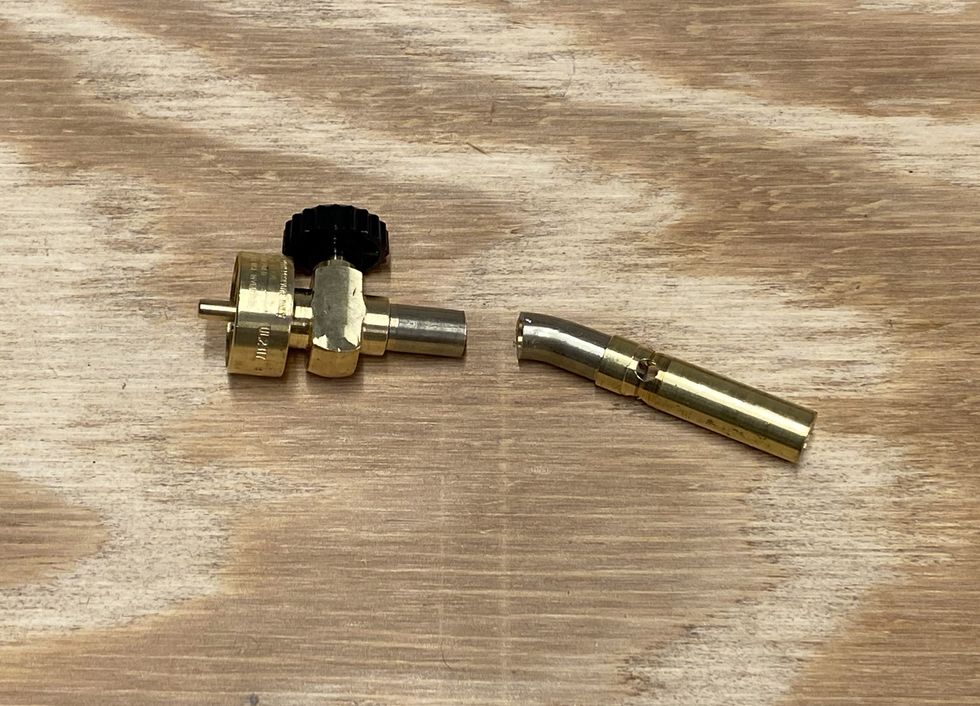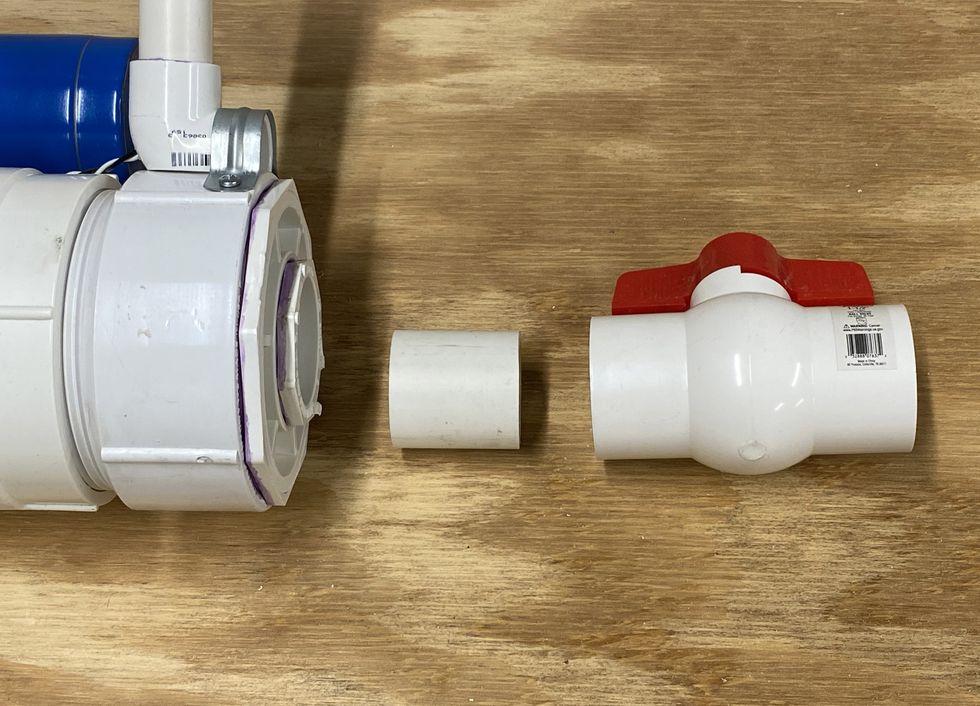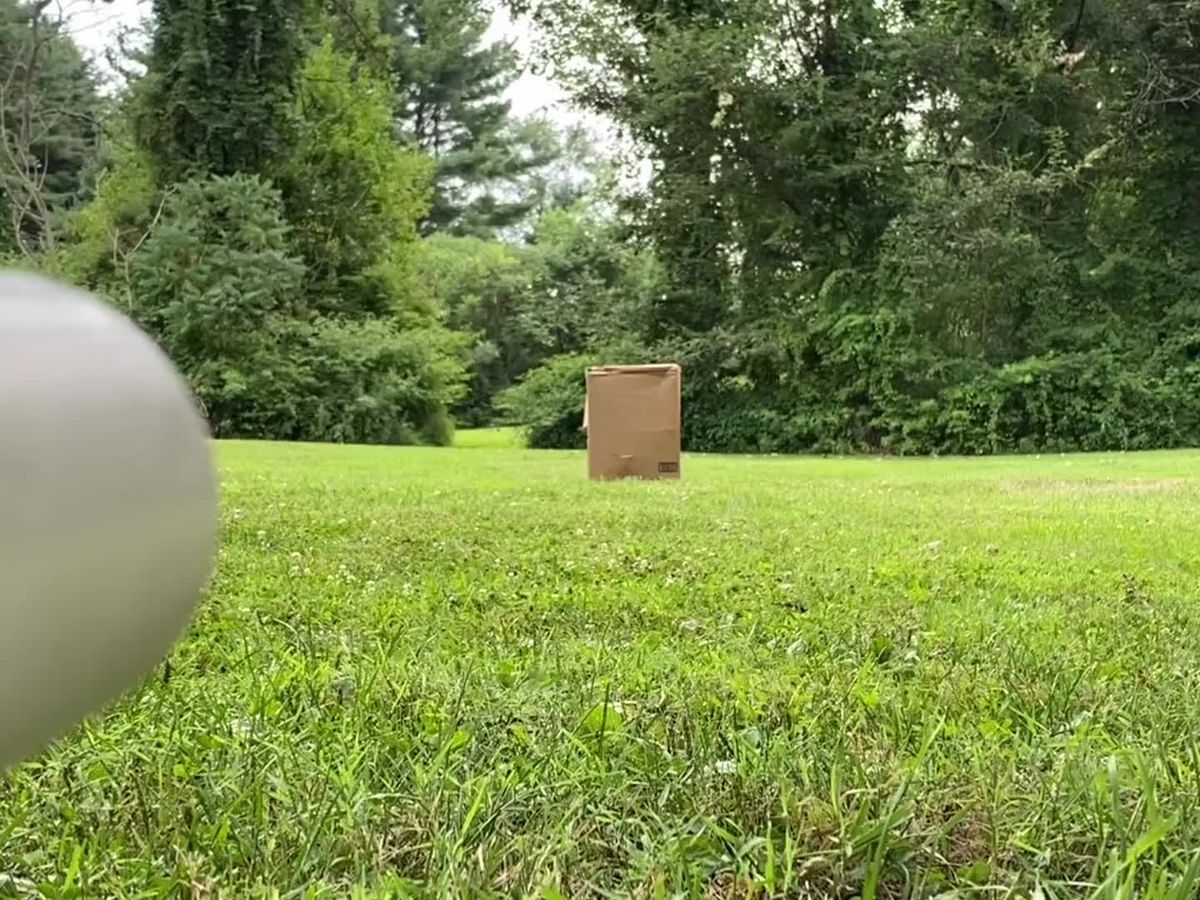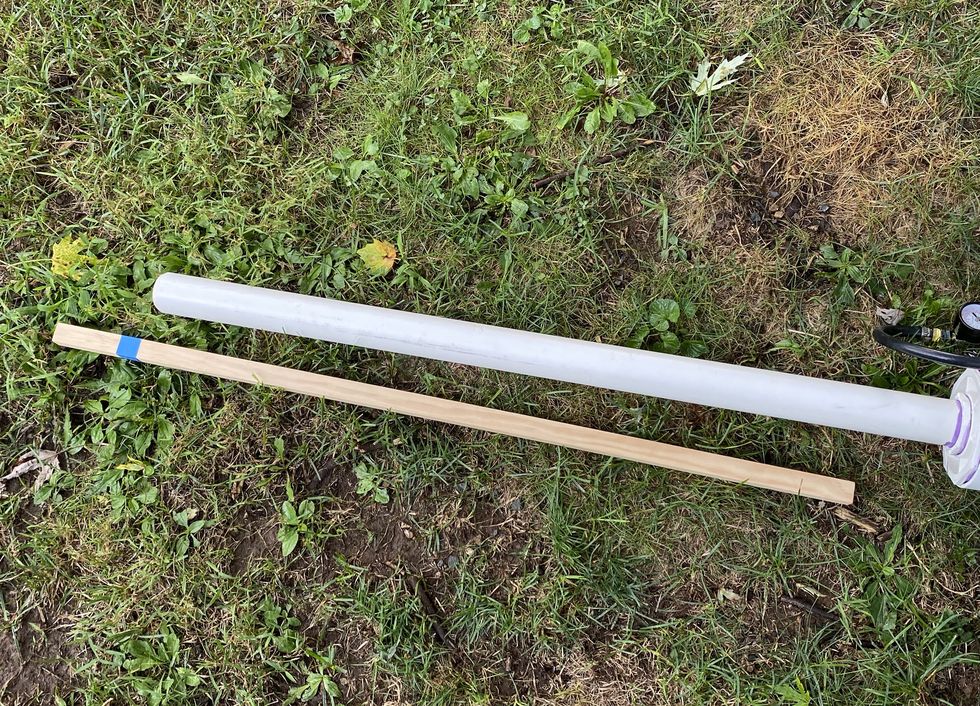Potato cannon, spud gun, tater tosser, starch resource deployment facilitators… They have a lot of names, but if you grew up in a rural area, chances are you had one, knew someone who had one, or yearned to build your own diy potato cannon. These PVC devices, fueled by Aqua Net hair spray, are capable of propelling a humble potato hundreds of yards. The satisfying, and giggle-inducing, “fwoomp” of a potato being launched over the trees never gets old. The biggest problem with the old-school launchers was that hair spray makes a sticky mess inside the cannon and can foul the igniters, as well as the threads on the cap used to close the back of the combustion chamber.
Using the basic design of one I made years ago, as well as various online resources, I built a new, improved potato cannon that does away with the hair spray. Instead, this launcher uses propane, precisely metered and injected into the combustion chamber, to provide more consistent performance.
It’s a bit more complicated to build than the old Aqua Net-powered launchers, but it looks a lot more impressive, like something out of a steampunk or sci-fi graphic novel.
Obligatory Warning
Now, before we show you how this potato cannon was built, we should address the elephant in the room. Make no mistake, potato cannons can be dangerous if not handled or built carefully. While the Bureau of Alcohol, Tobacco, Firearms and Explosives has determined that potato guns or cannons are legal to use and own*, when used with potatoes for recreational purposes, your state or municipality may have laws regarding their use or possession. It is your responsibility to know the laws in your jurisdiction regarding potato cannons.
*The ATF definition of firearms, destructive devices, and device exemptions. Wikipedia has an entry regarding spud gun legality.
Safety
Virtually none of the parts used in constructing this potato launcher are being used for their intended purpose. However, launchers have been built for years using these materials, and the size of the combustion chamber is conservative, so as to not push the limits of the materials used. The barrel, fittings, and combustion chamber of this launcher are all made of schedule 40 PVC, which is pressure-rated. Do not use schedule 40 PVC pipe that is labeled cellular core (also called foam core). Solid core schedule 40 pipe should be used. When gluing PVC pipe and fittings for a potato launcher, apply primer on the joints to ensure strong joints and wait at least 24 hours for the pipe cement to cure before use.
Materials Needed
- 4-in. schedule 40 PVC pipe (10 ¼-inches long)
- 4-in. schedule 40 PVC female adapter
- 4-in. schedule 40 PVC male adapter
- 4-in. schedule 40 PVC coupling
- 4-in. x 2-in schedule 40 flush bushing (x2)
- 2-in. x 1 ½-in. schedule 40 bushing (x2)
- 1 ½-in. schedule 40 PVC pipe (36-inches long)
- PVC pipe cement and primer
- 3⁄8-in. black malleable iron, street elbow
- 3⁄8-in. black steel close nipple
- 3⁄8-in. brass gas valve (x2)
- 3⁄8-in. x 6-in. black steel nipple
- 3⁄8 in. x 1⁄4 in. hose barb
- Yellow PTFE thread sealing tape
- Air valve regulator, ¼-in. NPT
- Bernzomatic torch head
- 14.1 oz. propane cylinder
- 1⁄4-in. MIP x 1⁄8-in. FIP brass bushing
- 1⁄4-in. x ¼-in. brass coupling
- 1⁄4-in. x ¼-in. hose barb
- 1⁄4-in. high-pressure fuel line (12 inches)
- 12mm hose clamps (x2)
- 7-in. hose clamps (x3)
- Scrap of wood ¾-in. thick
- 3⁄4-in. PVC pipe (24-in. long)
- ¾-in. PVC elbow (x3)
- ¾-in. PVC tee
- ¾-in. steel pipe hanger straps (x2)
- Grill igniter
- #8 x ¾-in. sheet metal screws (x4)
- #8 x 2 1/2-in. pan head screws (x2)
- 1 ½-in. PVC ball valve
- 40mm cooling fan
- 9-volt battery clip
- 9-volt battery snap connector
- 9-volt battery
- Momentary contact push button switch
- #6 x ¼-in. sheet metal screws (x4)
- Small scrap of sheet metal
Tools Needed
- Miter saw for cutting PVC pipe
- Assorted wrenches for pipe fittings
- Screwdrivers
- Benchtop grinder or sander
- Drill and assorted drill bits, including 37⁄64-in.
- 3⁄8-NPT pipe tap
- 1⁄8 in. pipe die and jig-saw
- Jig-saw
- Soldering iron
How to Build a Potato Cannon
Step one: Assemble the combustion chamber and barrel.
You’ll need the following parts to assemble the combustion chamber and barrel:
- 4-in. schedule 40 PVC pipe (10 ¼-inches long)
- 4-in. schedule 40 PVC female adapter
- 4-in. schedule 40 PVC male adapter
- 4-in. schedule 40 PVC coupling
- 4-in. x 2-in schedule 40 flush bushing (x2)
- 2-in. x 1 ½-in. schedule 40 bushing (x2)
- 1 ½-in. schedule 40 PVC pipe (36-inches long)
- PVC pipe cement and primer
Be sure to use the purple PVC primer on both the pipe fittings and pipe over the entire surface that will be joined with the pipe cement.
Step two: Assemble the meter pipe.
Propane will only ignite when at a 2.2-9.6 percent gas to air mixture. So, the meter pipe is used to inject a precise amount of propane into the combustion chamber to keep the mixture proportion at about 4.5 percent. If you want to design a different-sized potato cannon, more information and a handy calculator for fuel volumes can be found here.
When assembling threaded pipe fittings, be sure to use the yellow PTFE thread sealing tape on the threads. These are the parts you'll need to assemble the meter pipe:
- 3⁄8-in. black malleable iron, street elbow
- 3⁄8-in. black steel close nipple
- 3⁄8-in. brass gas valve (x2)
- 3⁄8-in. x 6-in. black steel nipple
- 3⁄8 in. x 1⁄4 in. hose barb
- Yellow PTFE thread sealing tape
Step three: Assemble the propane valve and regulator.
You'll need these parts to assemble the propane valve and regulator:
- Air valve regulator, ¼-in. NPT
- Bernzomatic torch head
- ¼-in. MIP x 1/8-in. FIP brass bushing
- ¼-in. x ¼-in. brass coupling
- ¼-in. x ¼-in. hose barb
- ¼-in. high-pressure fuel line (12 inches)
- Yellow PTFE thread sealing tape
Step four: Install the meter pipe, propane cylinder, and valve assembly.
Aside from the components you've already assembled, you'll also need:
- 14.1 oz. propane cylinder
- Scrap of wood ¾-in. thick
- 7-in. hose clamps (x3)
- 12mm hose clamps (x2)
Step five: Assemble and install the handle.
The handle assembly will house a grill igniter that will be used as a trigger. These are the parts you'll need to put it together:
- ¾-in. PVC pipe (24-in. long)
- ¾-in. PVC elbow (x3)
- ¾-in. PVC tee
- ¾-in. steel pipe hanger straps (x2)
- Grill igniter
- #8 x ¾-in. sheet metal screws (x4)
- #8 x 2 -in. pan head screws (x2)
Step six: Assemble and install the combustion chamber vent.
The powered vent ensures you have a fresh supply of air each time you reload the potato cannon. After you've fired the cannon, some exhaust will be left in the chamber, which will throw off the air-to-propane ratio. So, after the cannon is fired, open the vent, evacuate the exhaust, refill the combustion chamber with fresh air, and close the vent.
To assemble the power vent, you need the following parts:
- 1 ½-in. PVC ball valve
- 40mm cooling fan
- 9-volt battery clip
- 9-volt battery snap connector
- 9-volt battery
- Momentary contact push button switch
- #6 x ¼-in. sheet metal screws (x4)
- Small scrap of sheet metal
Step seven: Test for leaks.
Once everything is assembled, you'll need to test the metal pipe fittings for leaks. To do this, mix up some soapy water in a spray bottle. Open the front yellow gas valve, the black propane valve, and the silver regulator valve until the gauge reads about 90 PSI. Spray each place where fittings join. If you see any bubbles, tighten the fittings until they stop.
Step eight: Fire your potato cannon.
Wait at least 24 hours after gluing the PVC components of the potato cannon before attempting to fire it. On the first firing, I placed a sheet of plywood between the cannon and myself and reached over to fire it. Once I fired it a couple times, I removed the plywood.
Brad Ford has spent most of his life using tools to fix, build, or make things. Growing up he worked on a farm, where he learned to weld, repair, and paint equipment. From the farm he went to work at a classic car dealer, repairing and servicing Rolls Royces, Bentleys, and Jaguars. Today, when he's not testing tools or writing for Popular Mechanics, he's busy keeping up with the projects at his old farmhouse in eastern Pennsylvania.
